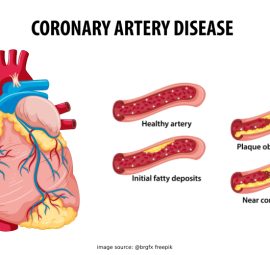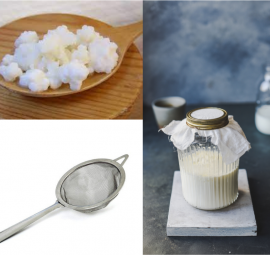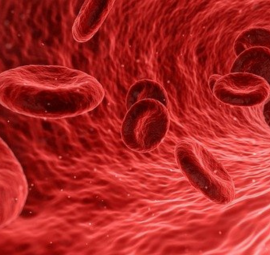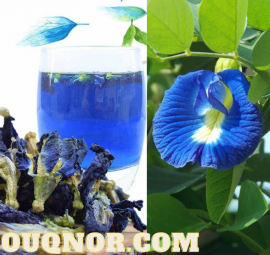Last Updated on February 2, 2021 by souqnorwp
An overview of anemia
About 1.62 billion people suffer from anemia worldwide, according to statistics from the World Health Organization, and iron deficiency anemia is the most common.
There are many forms of anemia, and each type has its own causes. Anemia can be temporary or long lasting, and it can range from mild to severe.
Anemia can be treated by taking nutritional supplements, with a healthy and varied diet, as well as undergoing medical procedures, depending on the type of anemia.
Definition of anemia
Anemia occurs as a result of a decrease in the number of healthy red blood cells in the blood to carry sufficient oxygen to the tissues of the body. It is the most common blood disorder.
What are red blood cells
Red blood cells, found in abundance in the bloodstream, contain hemoglobin, an iron-rich protein that binds with oxygen in the lungs and transports it to tissues throughout the body. Red blood cells are made from the hematopoietic stem cells in the bone marrow, these cells are known as erythrocyte bone marrow cells.
Red blood cells carry oxygen and essential materials to all parts of the body, and waste materials are transported to the liver, which is the main function of red blood cells, but there are other functions of these cells which are the release of the carbonic anhydrase enzyme that allows the blood to transport carbon dioxide to the lungs to be expelled from the body through Exhale. In addition to the blood pH control function, it works on the acid-base balance in the blood.
Types of anemia and its causes
There are more than 400 types of anemia, and they are divided into three groups:
- Anemia caused by blood loss.
- Anemia caused by a deficiency or an imbalance in the production of red blood cells.
- Hemolytic anemia.
Causes of the first group, anemia due to blood loss: –
- It occurs as a result of an ulcer in the stomach or intestine, cancer, or surgery.
- The use of nonsteroidal anti-inflammatory drugs such as aspirin or ibuprofen.
- The period of menstruation or childbirth in a woman, especially if the menstrual cycle is abundant because of fibroids, or the succession of childbirth or something else.
Causes of the second group, anemia caused by a deficiency or defect in the production of red blood cells: –
This type of anemia may occur because the body does not make enough red blood cells, or they may not function properly. This may happen because there is a mistake in the red blood cells or because there are not enough vitamins and minerals that the body needs to form red blood cells naturally. This problem occurs for one of the following reasons: –
- Problems with bone marrow and stem cells.
These problems may prevent the body from making enough red blood cells, because some of the stem cells in the marrow in the center of the bone develop into red blood cells. And if there are not enough of these cells or not working properly or replace stem cells with other cells such as cancer cells. Anemia caused by bone marrow or stem cell problems includes: –
- Aplastic anemia occurs when there are not enough stem cells or there are never stem cells. You may develop aplastic anemia due to genetics or when the bone marrow is affected by drugs, radiation, chemotherapy, or infection. Other malignancies that commonly affect bone marrow include multiple myeloma (an uncommon cancer) or leukemia. Sometimes, there is no clear cause for aplastic anemia.
- Lead poisoning, lead is a mineral that is toxic to bone marrow, causing the red blood cell count to decrease. Lead poisoning can occur when working in certain environments contaminated with lead, household dust contaminated with lead, or eating food preserved with cans that have been soldered with lead. It can also transmit to the body if the food is cooked in some types of pottery containing glaze or other types of cooking utensils that contain lead.
- Thalassemia disease, is caused by a genetic mutation in the DNA of the cells that make up hemoglobin, and this mutation is transmitted from parents to children, which leads to a problem in the formation of normal hemoglobin, and therefore the low levels of hemoglobin and the high rate of red blood cell damage leads to anemia resulting from the condition of thalassemia . Usually the condition appears in people of Mediterranean, African, Middle Eastern and Southeast Asian descent. This condition can range from mild to life-threatening, the more severe form is called coli anemia.
- Iron deficiency anemia.
Iron deficiency anemia is caused by not having enough mineral iron in the body. Bone marrow needs iron to produce hemoglobin, which is the part of red blood cells that carries oxygen and nutrients to the organs.
- Anemia caused by a lack of vitamins, especially vitamin B12 or folic acid.
Vitamin deficiency anemia can occur when we do not get enough vitamin B12 and folic acid. We need the aforementioned vitamins to make red blood cells. We may get enough of these vitamins, but our bodies cannot absorb them, and this leads to pernicious anemia.
- Sickle cell anemia is a disorder that mainly affects African Americans and Hispanic Americans in the United States. The red blood cells become round, crescent-shaped due to a problem with genes. Sickle cell anemia results when red blood cells break down rapidly, so oxygen cannot reach the body’s organs. Crescent-shaped red blood cells can also get stuck in small blood vessels and cause pain.
Causes of group III hemolytic anemia: –
Hemolytic anemia occurs when red blood cells break down in the bloodstream or in the spleen. Endogenous hemolytic anemia develops when the red blood cells produced by the body do not function properly. This condition is often hereditary, as in the case of thalassemia. An inherited metabolic disorder can lead to this condition, as is the case in people with G6PD deficiency, or red blood cell membrane instability, such as hereditary erythrocytosis. A person of any age can develop hemolytic anemia.
In this article, we will focus on iron deficiency anemia
Symptoms of anemia
The symptoms of anemia depend on the cause of the anemia. If the anemia is caused by a chronic disease, this disease may mask it and can be detected by analyzes of another condition. These symptoms may be mild and may be dangerous. Symptoms include the following: –
- Dizziness or lightheadedness
- Disturbance of Becca, which is the desire to eat what cannot be entrusted, such as dirt and mud.
- A desire to eat or chew ice.
- Brittleness and protruding nails.
- Hair loss and thinning hair.
- Abnormal heartbeat.
- Headache.
- Pain in the bones, joints, chest and abdomen.
- Developmental problems in children and teenagers.
- Shortness of breath.
- Arrhythmia
- Pale or yellowish skin.
- Cold hands and feet.
- restless leg syndrome.
- Fatigue or weakness.
Causes of iron deficiency anemia
Iron deficiency anemia can occur for the following reasons:-
- A diet that does not contain enough iron, especially in infants, children, teens, and vegetarians.
- Donate blood often.
- Pregnancy and breastfeeding use up iron.
- The common cause is slow, chronic bleeding, usually from an stomach or intestinal source.
- Menorrhagia in a woman causes the loss of red blood cells.
- Ulcers in the stomach or small intestine, which are treated by promoting liver health.
- Colon cancer may cause anemia.
- Eat only vegetarian food, because it contains non-heme iron that is absorbed only in a very small percentage. Therefore, vegetarians must eat a large amount of vegetables, but many vegetables and legumes contain oxalates or phytates that impede iron absorption.
- Some antibiotics can deplete iron from the body.
- Painkillers such as paracetamol.
- White flour, sugars, artificial sweeteners, canned foods and fries
- Lack of stomach acid can cause some minerals such as iron and calcium to be unable to be absorbed.
- Dysfunction of the colon, surgery, or cholecystectomy may cause poor absorption of iron.
- Inflammation may cause iron to deplete, because harmful and beneficial bacteria need iron to grow. When inflammation occurs, the immune system prevents iron from harmful and beneficial bacteria alike during infection or fever and during inflammation, thus preventing the pathogens from obtaining iron. When the disease disappears, the inflammation goes away, but the chronic inflammation resulting from immune diseases may cause the body to deprive the body of Rare metals, and the continuation of chronic inflammation exacerbates the anemia. Giving iron in this condition worsens the disease, as it fuels the pathogens. The solution in this case is the radical elimination of the infection.
- Chronic conditions that make a person more vulnerable to anemia, especially the elderly: –
- Rheumatoid arthritis or other autoimmune diseases.
- Kidney disease.
- Liver disease.
- Thyroid disease.
- Inflammatory bowel disease (Crohn’s disease or ulcerative colitis).
- One of the inhibitors of iron absorption may be drinking heavy red tea or heavy boiled coffee, because with the increase of boiling a lot, substances are secreted that hinder the absorption of iron.
-
Read also Ways to reduce the appearance of white hair prematurely
Methods for eliminating and preventing anemia due to iron and vitamins deficiency in food: –
Many types of anemia cannot be prevented, but eating healthy foods that contain a variety of vitamins and minerals can help avoid anemia due to iron and vitamin deficiency.
- We must preserve stomach acid, because if stomach acid is decreased, it may impede the absorption of some minerals, such as iron and calcium.
- We must maintain the health of the intestine by promoting the beneficial bacteria (microbiome) in the intestine by eating foods that contain probiotics, such as curd, fiber, bread fermented with natural yeast, sauerkraut, kefir milk, and soft cheese. In addition to avoiding foods that eliminate beneficial bacteria and create harmful bacteria in their place, such as genetically modified foods, sugars, refined carbohydrates, antibiotics, fast foods, such as burgers and fries.

- Eat a diet rich in iron, folic acid, copper, vitamin A, and vitamin C, in order to aid in iron absorption, thus increasing the body’s production of red blood cells. Such as red meat such as beef, dark green leafy vegetables, garlic, leeks, green onion leaves, sorrel, hibiscus, purslane, fruits, broccoli, seeds and nuts, beetroot, turnip, sweet potatoes, watercress, red pepper, chard, wheat grass and herb. Green barley, dried fruits, legumes such as lentils and beans, egg yolks.
- Eat foods rich in vitamin B12, such as meat and dairy products.

- Eat spirulina, propolis, and natural pollen. Propolis kills Candida and parasites, because when the friendly bacteria are few or dead, they are replaced by the Candida yeast.

- It is possible to prepare a plate of yogurt with a spoon of milking and grains of dates in addition to a spoonful of honey daily in the morning and evening, in addition to eating a plate of protein and salad, in order to prevent iron anemia or speed up its elimination.
- Regular exercise promotes red blood cell production. Vigorous exercise causes the body to need more oxygen. When you need more oxygen, the brain sends signals to the body to make more red blood cells.
In some cases, adhering to a nutrient-rich diet or lifestyle isn’t enough to increase your RBC count to healthy levels. Rather, it may require returning to the doctor to treat conditions that cause a lack of red blood cells, such as bleeding or whatever, as medication may be necessary in these cases.
https://www.drberg.com/search?query=Iron+anemia
https://www.hematology.org/education/patients/anemia
https://www.mayoclinic.org/diseases-conditions/anemia/symptoms-causes/syc-20351360
https://www.webmd.com/a-to-z-guides/understanding-anemia-basics#1
https://www.healthline.com/health/hemolytic-anemia#in-children
Dr. Judah Awad
Doctor Muhammad Al-Fayed

 Turkish
Turkish العربية
العربية









This article was spot-on! You always hit the mark with your content.
“I can’t express how valuable this post is! The level of detail and thoughtful explanations demonstrate your mastery of the subject. Truly a goldmine of information.”